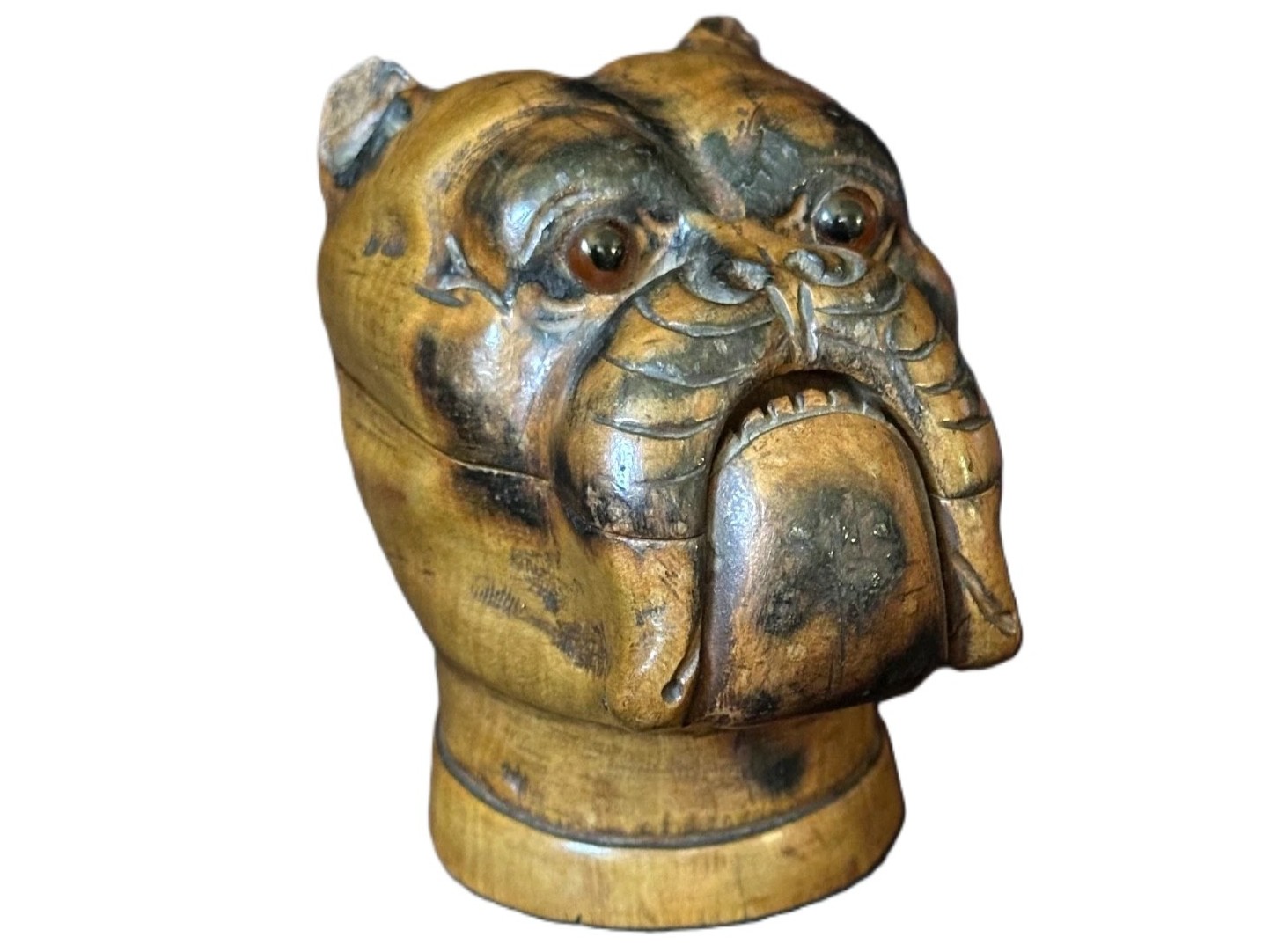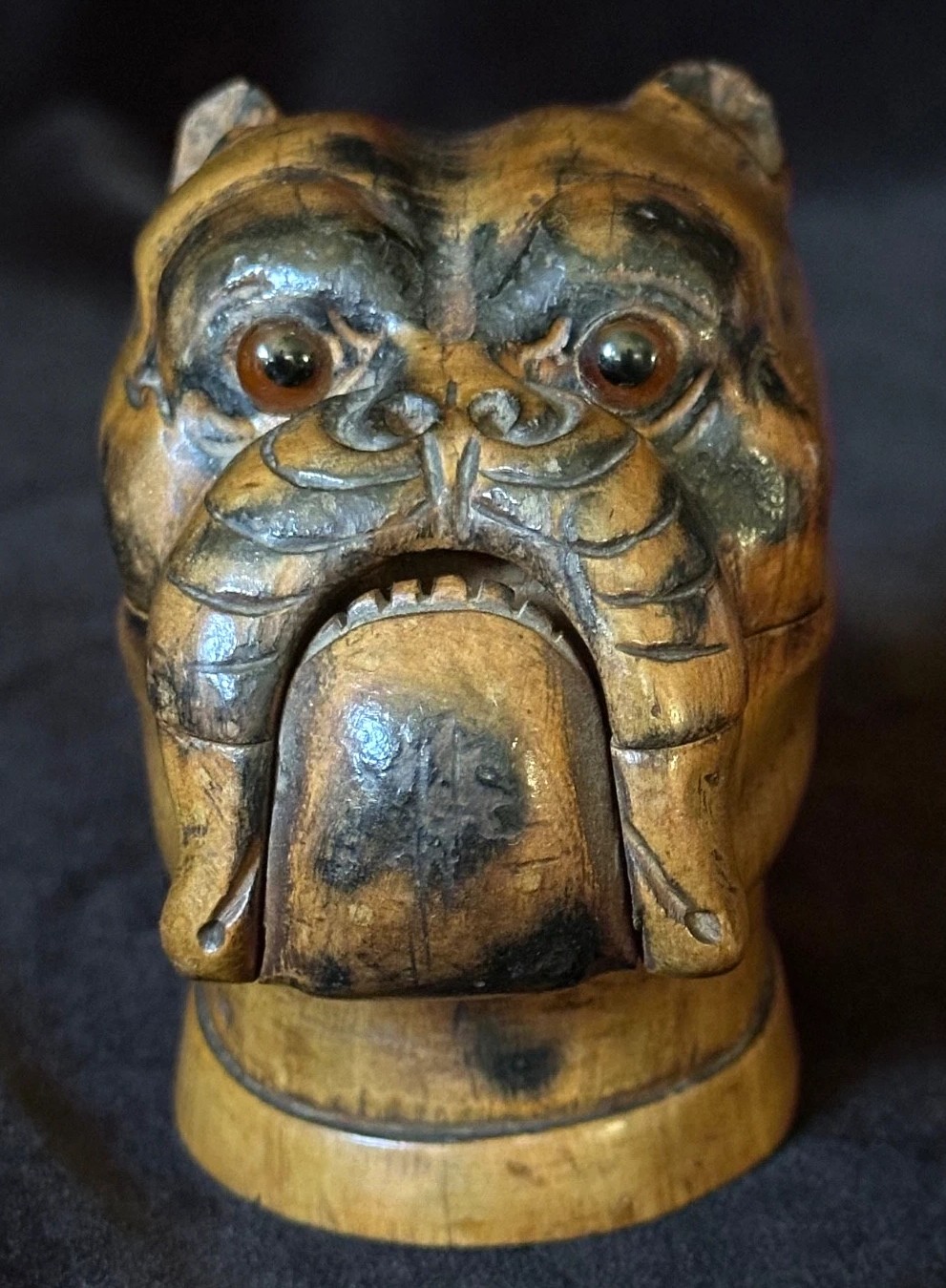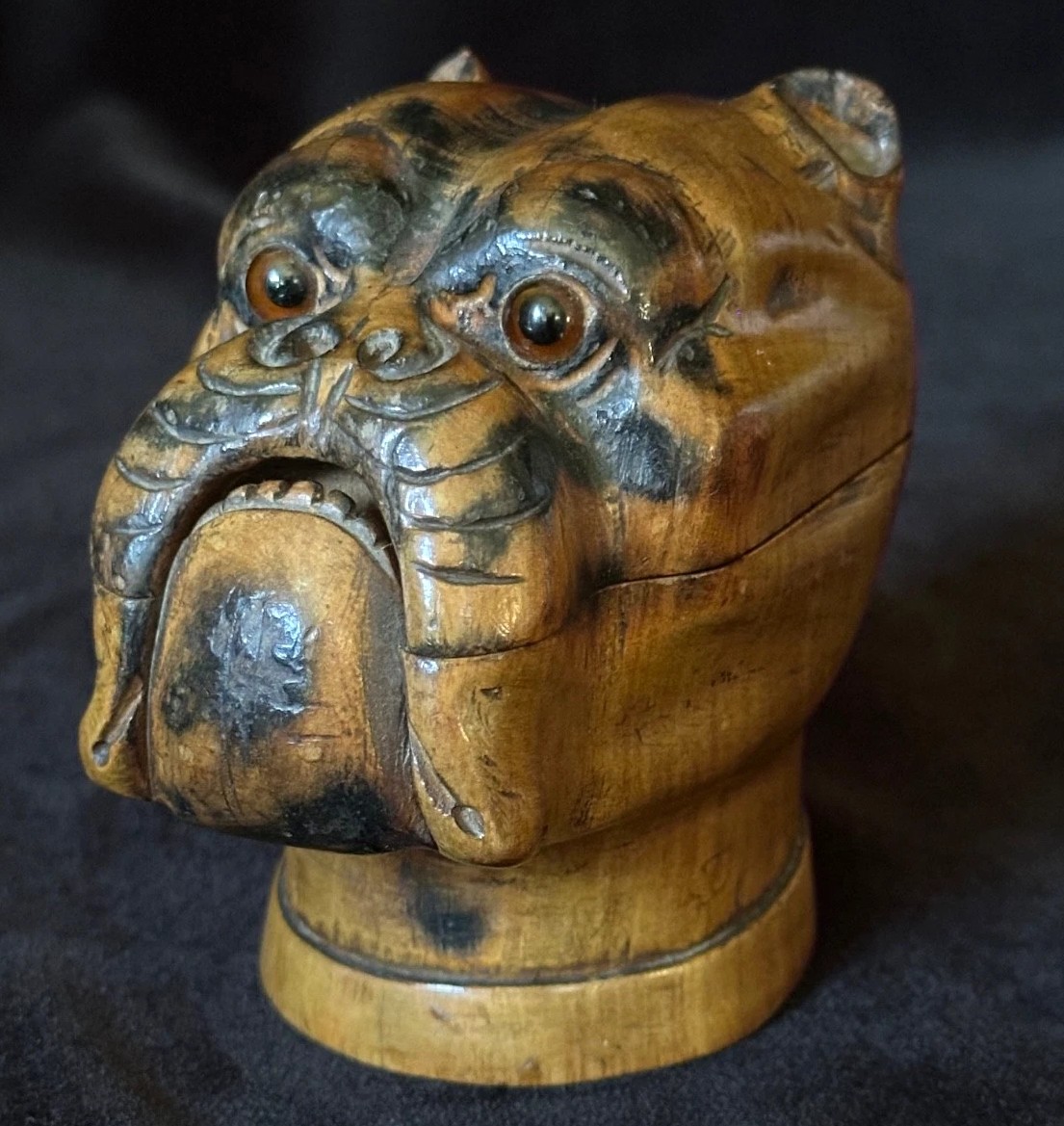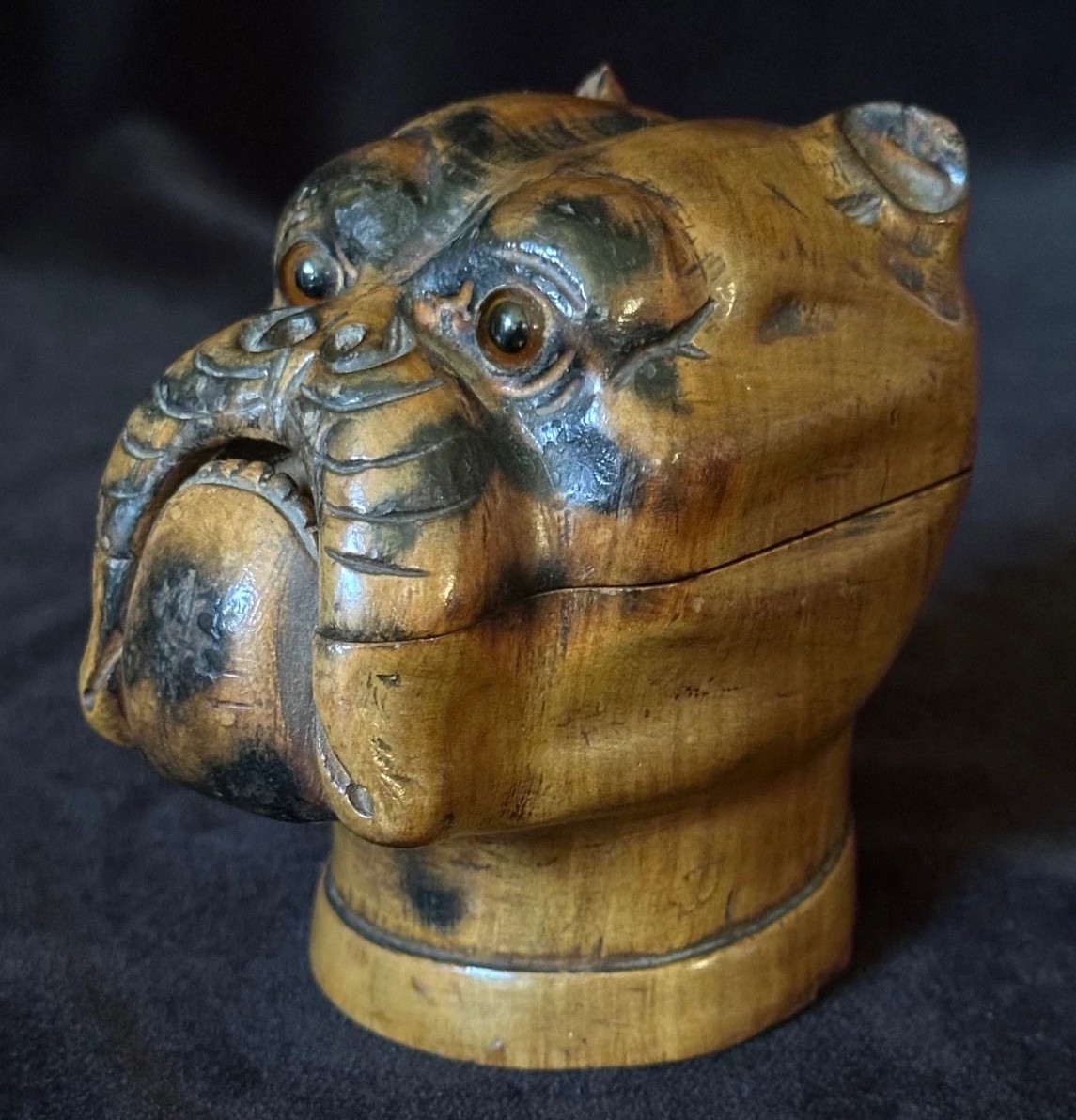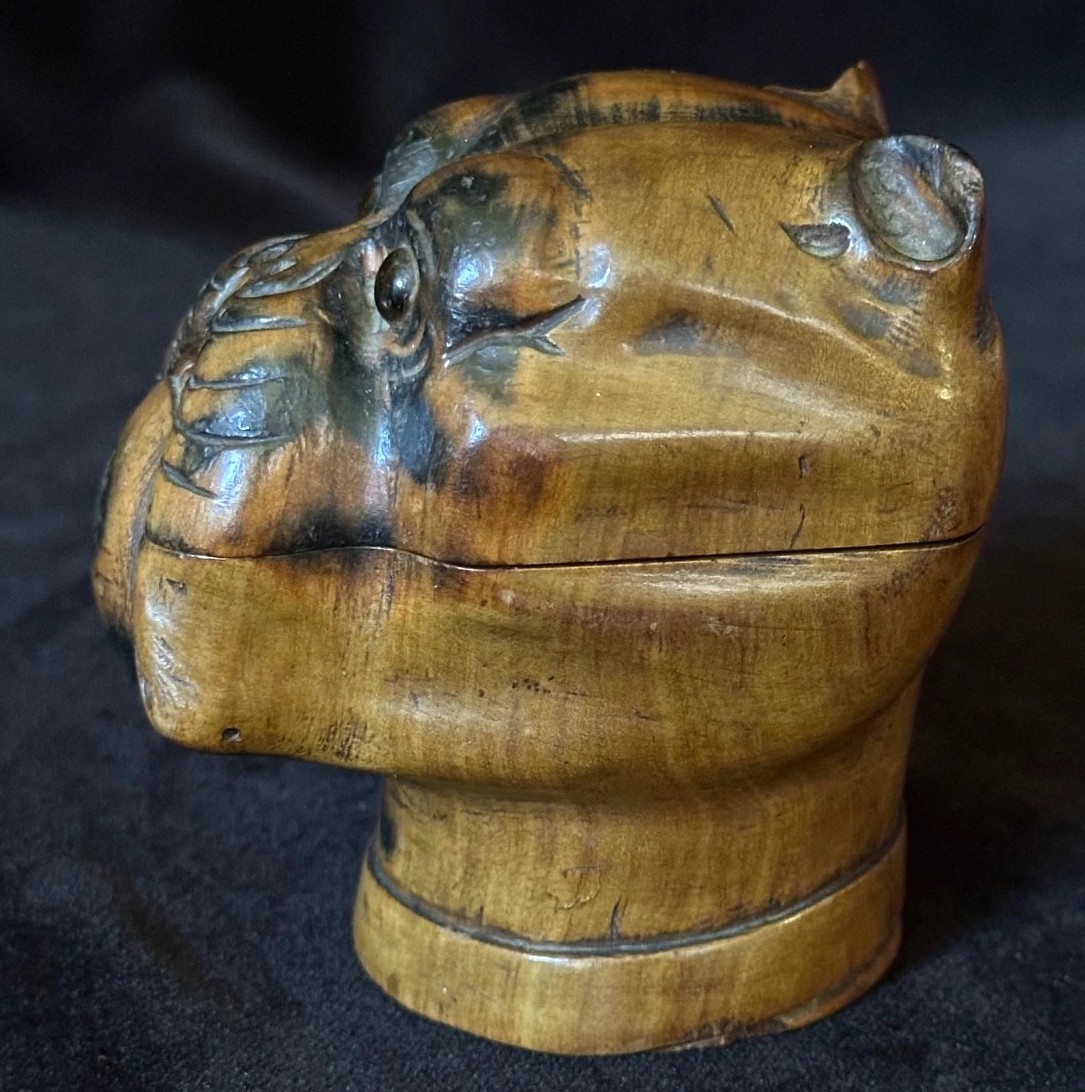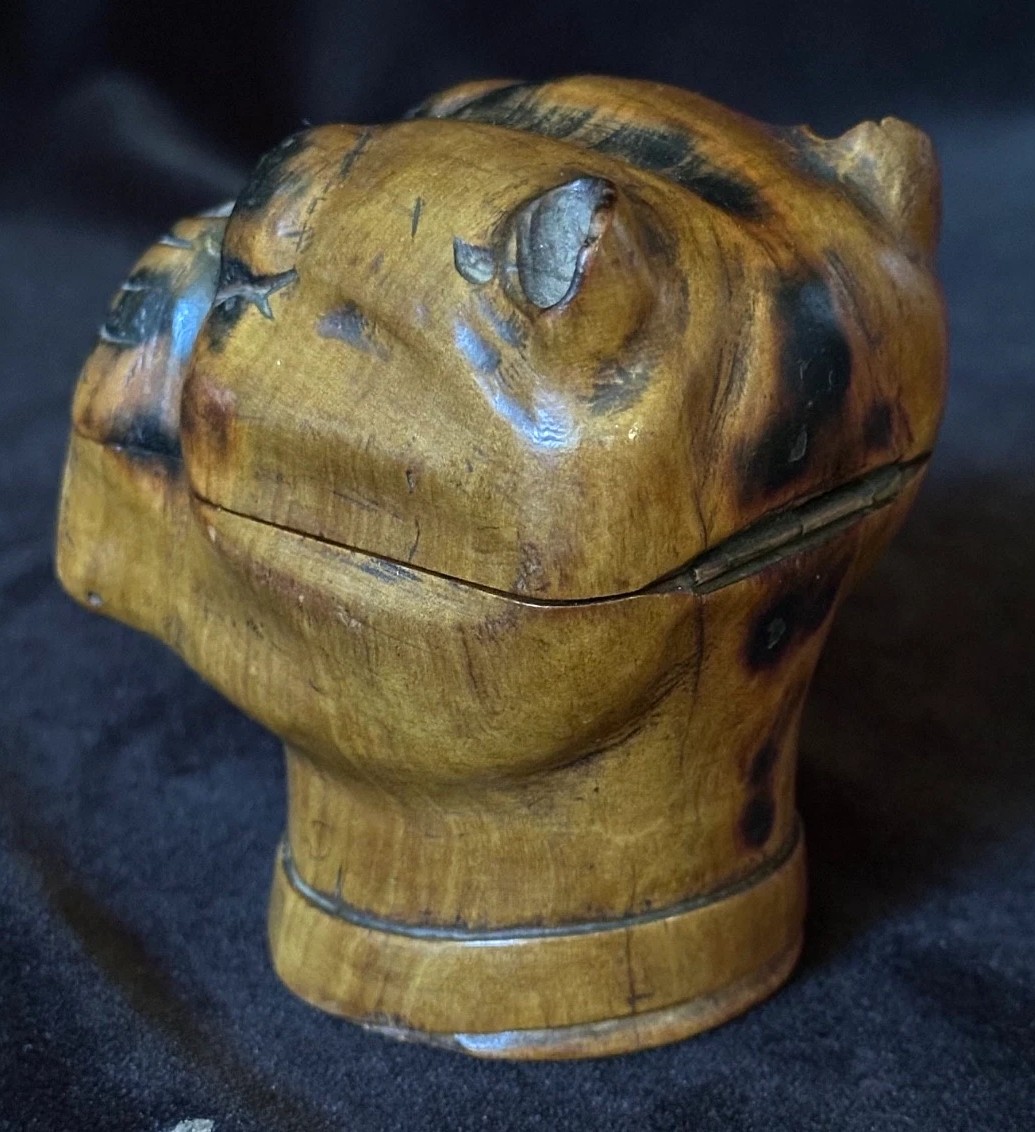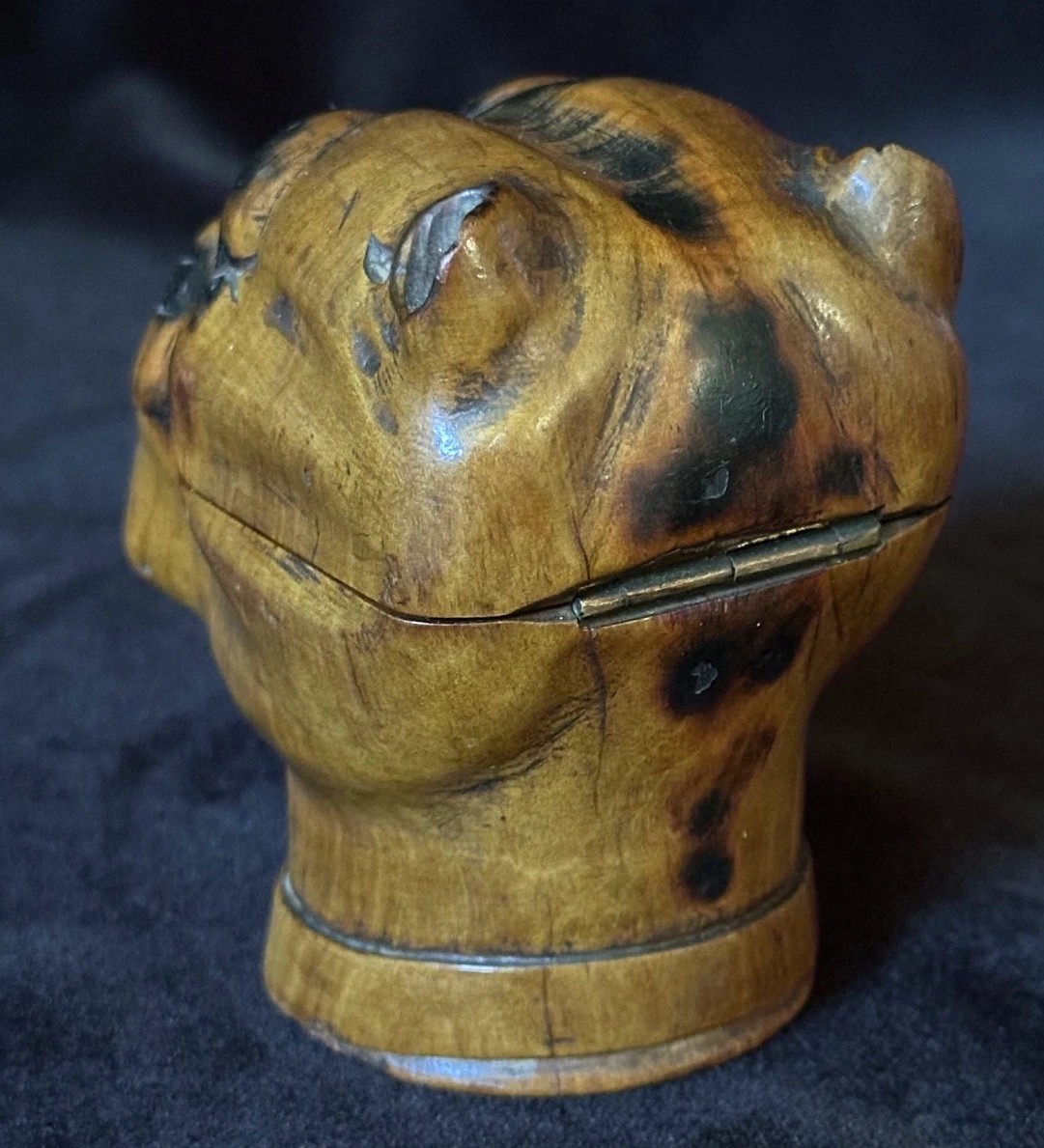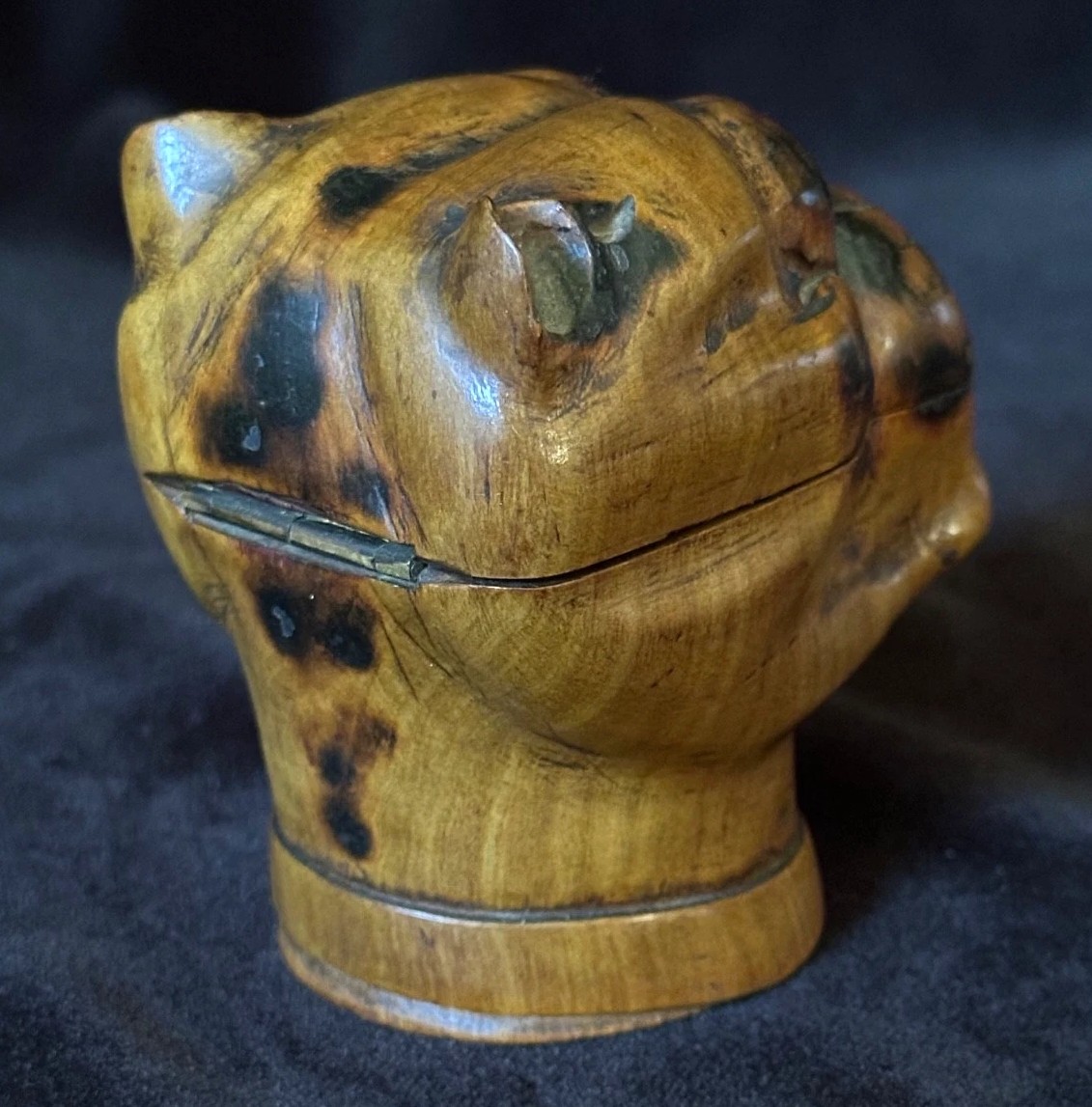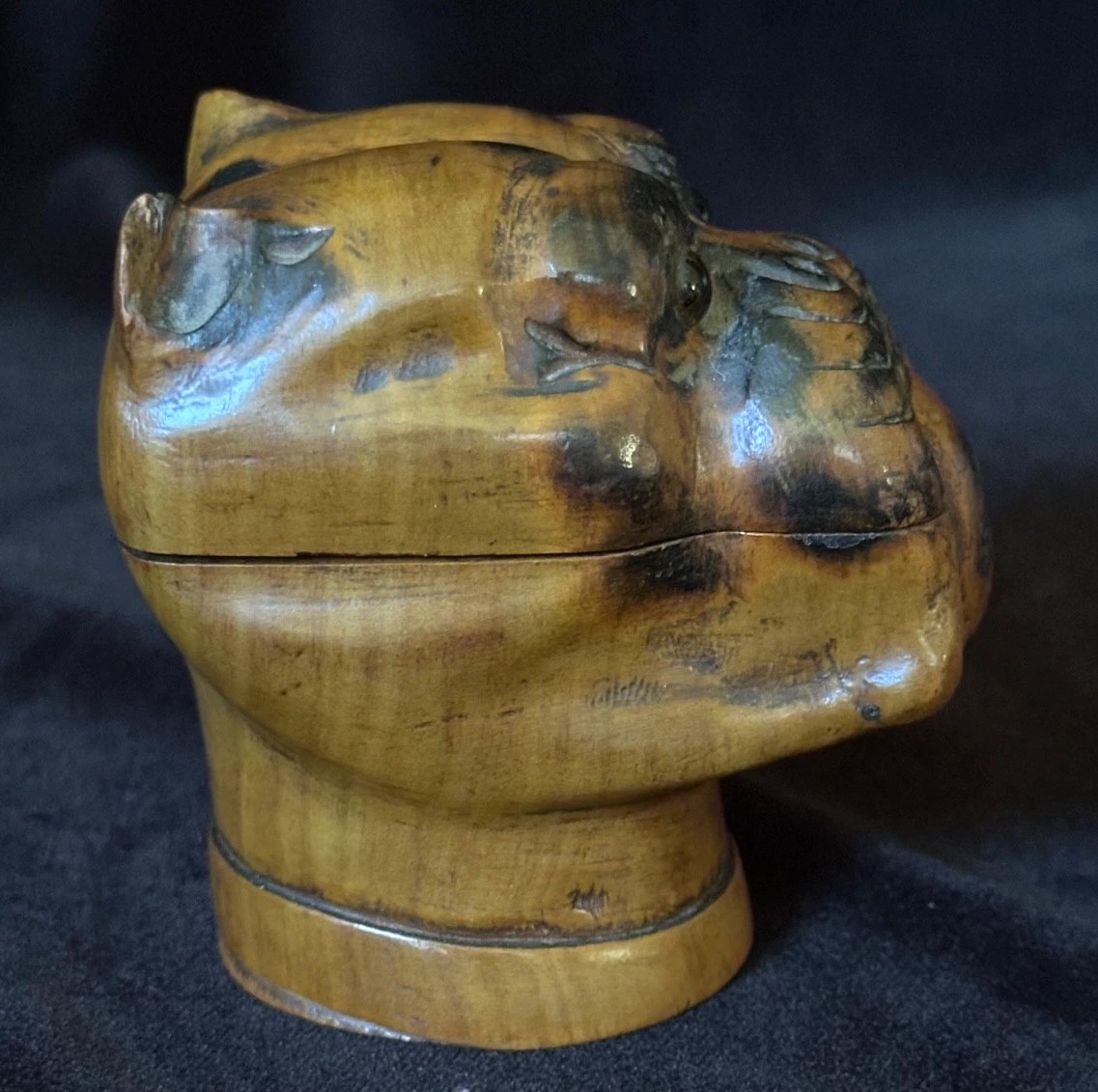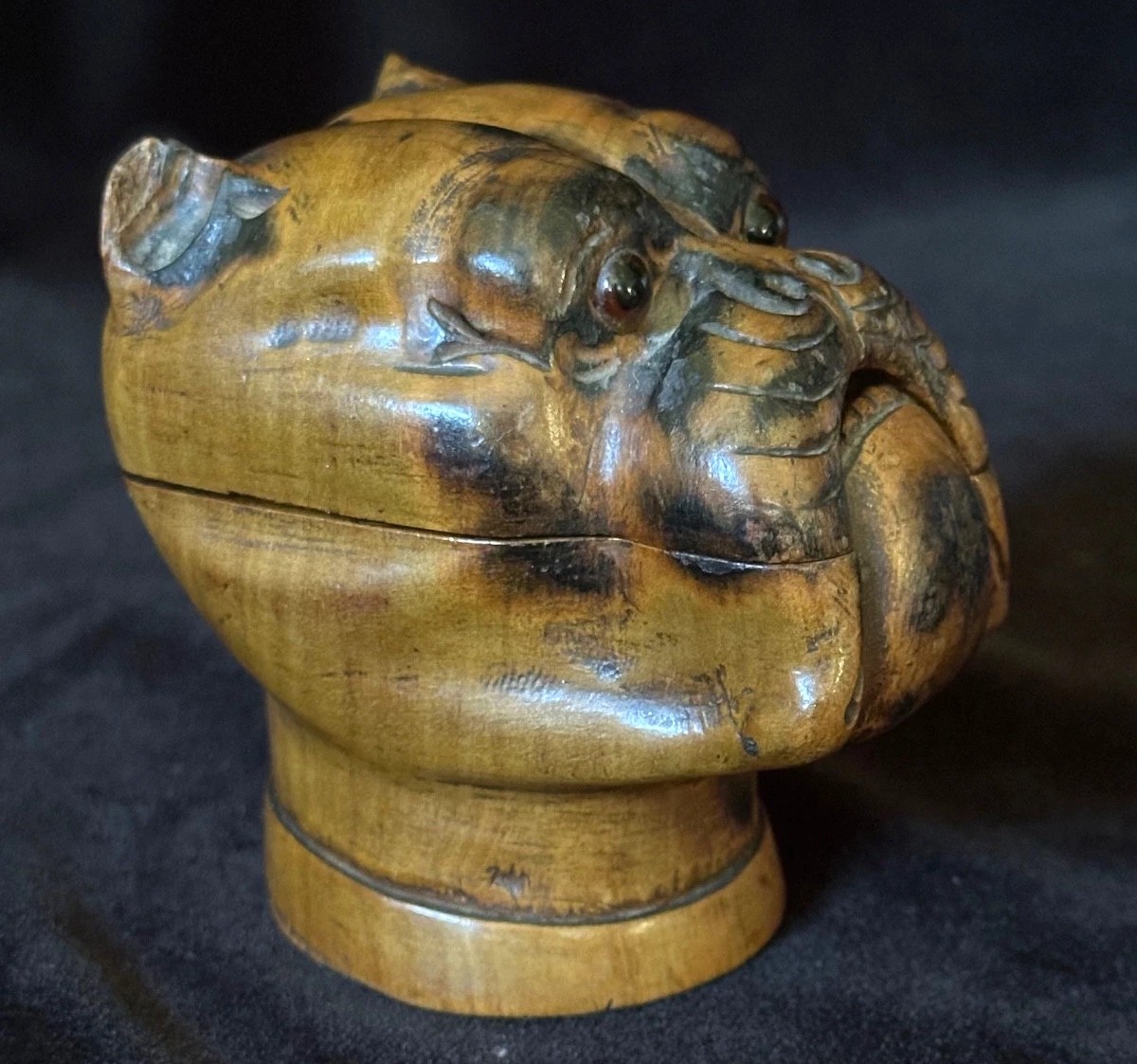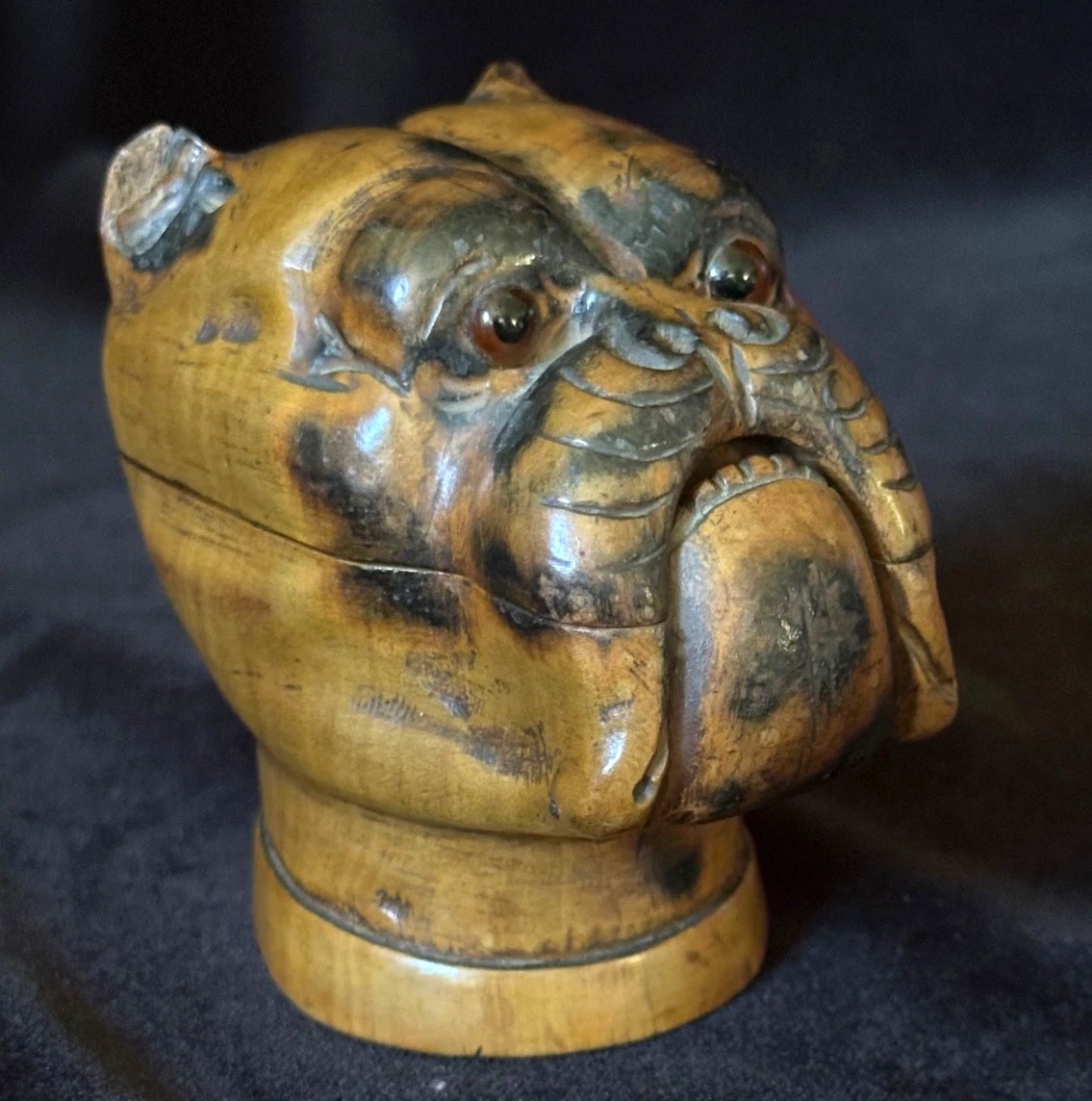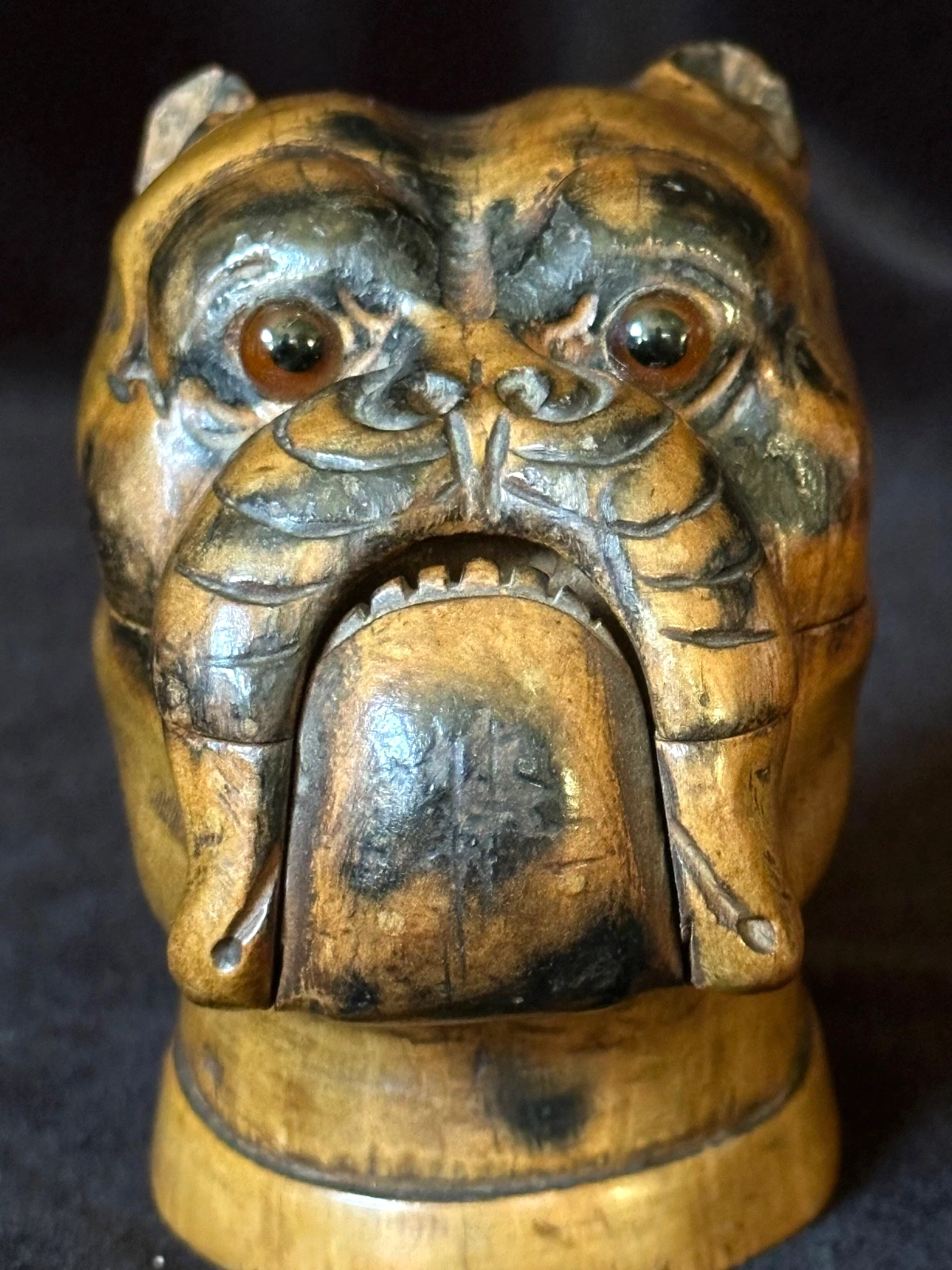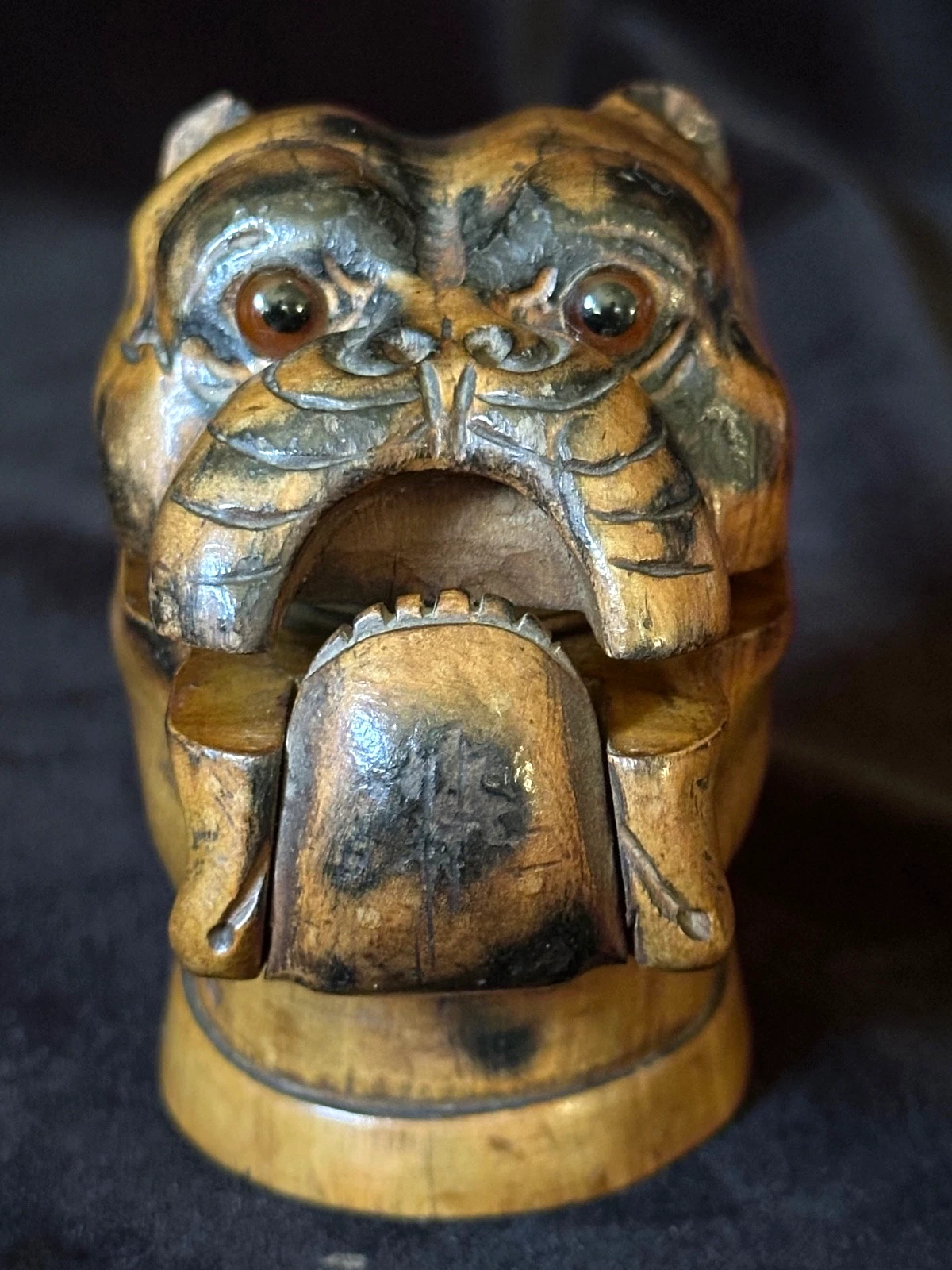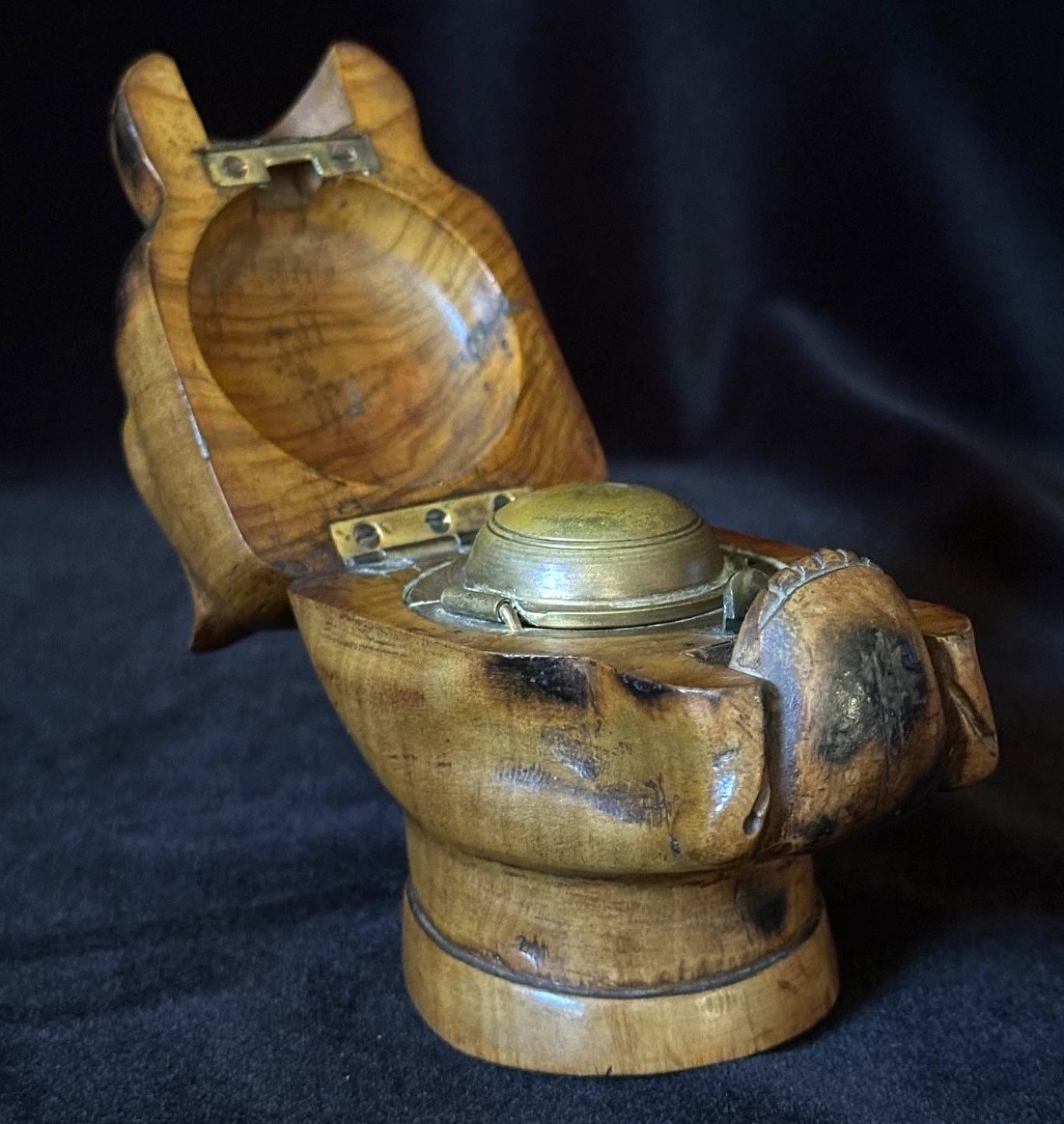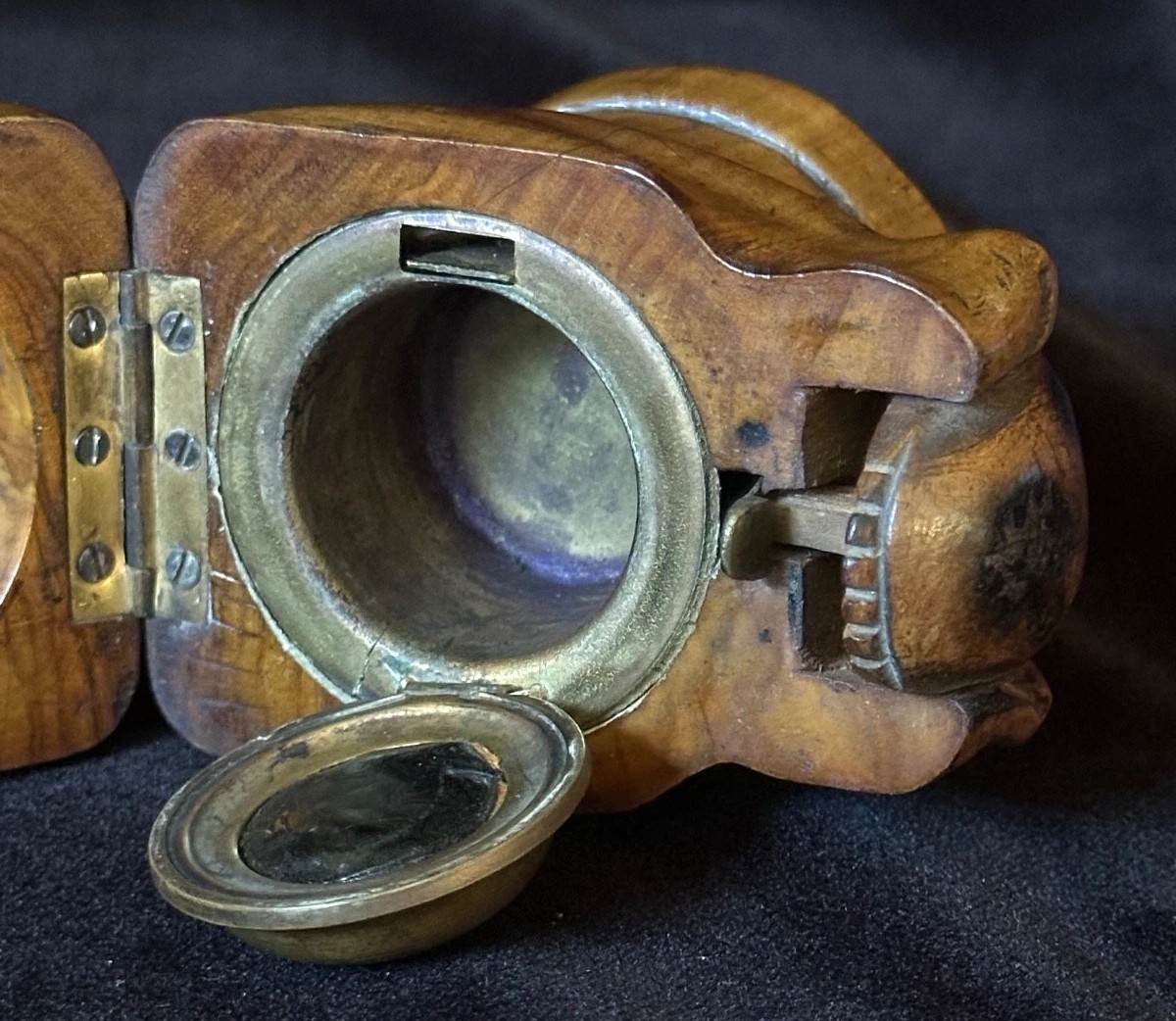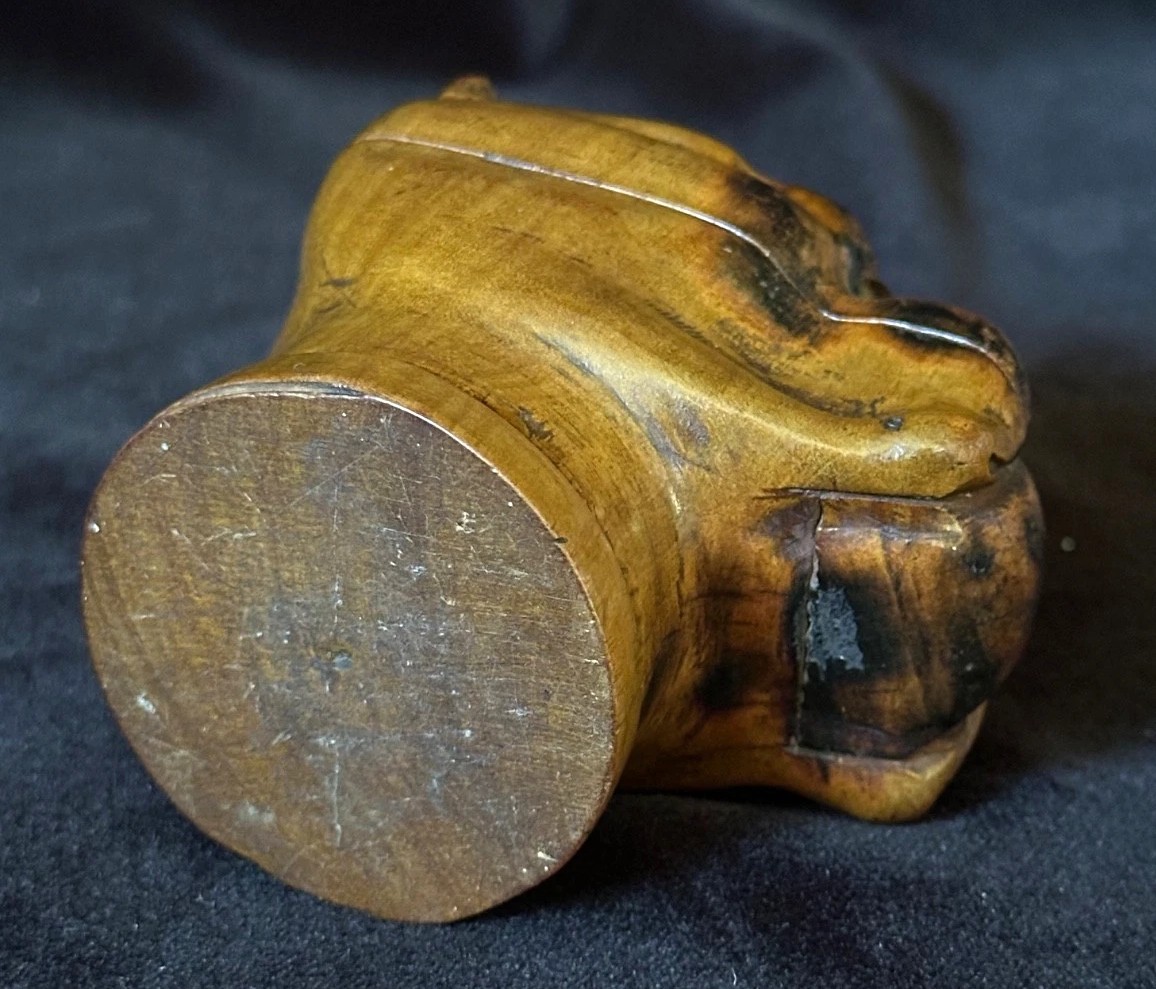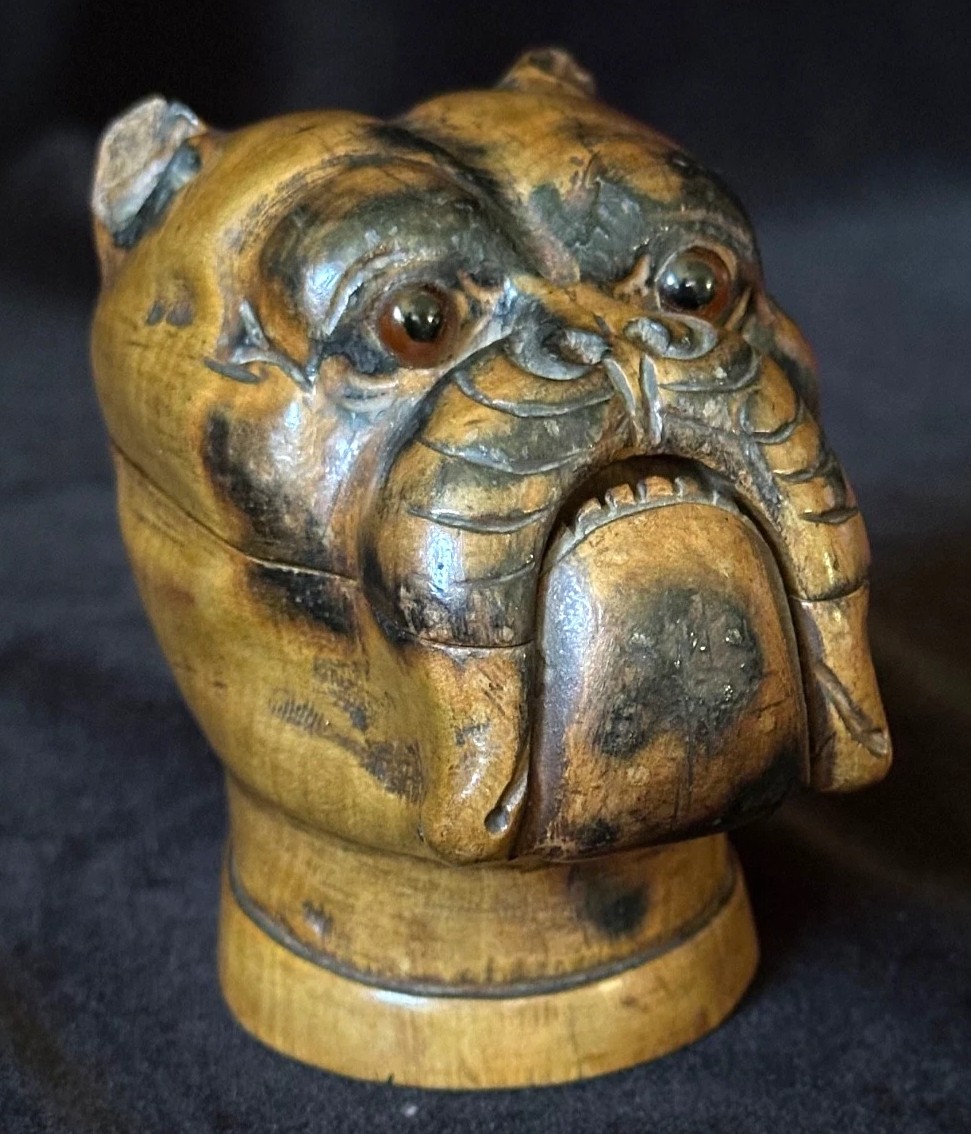
Black Forest Carved Dog’s Head Inkwell
| Categories | Figural - Animals & Living Creatures |
| Type | dog |
| Material | Wood |
| Markings | Unmarked |
| Manufacturer | Black Forest |
| Origin | Switzerland |
| Date or Era | circa 1900 |
| Measuring | 2 ⅞” x 2 ⅛” x 2 ⅞” high |
This is a fine example of a Black Forest carved novelty inkwell. The Black Forest region of Switzerland and Germany was famous during the Victorian and Edwardian eras (mid-19th to early 20th century) for highly detailed, lifelike wood carvings, often of animals, which were frequently turned into functional desk or decorative objects.
Description of the Dog’s Head Inkwell
Exterior Carving and Details
- Form: The object is intricately carved in the form of a dog’s head, resting horizontally on a flat base. The carving captures a fierce or determined expression.
- Wood Color/Markings: The wood is a medium brown and features pronounced, darker lines resembling brindle or tiger-stripe markings. These lines highlight the dog’s musculature and contours, giving the piece great visual texture. This brindle effect is either achieved through the natural grain of the specific wood used or by a staining and carving technique popular in Black Forest work.
- Facial Features:
- The dog has deeply carved, furrowed features, a broad snout, and distinct cheekbones.
- The eyes are made of glass, giving the dog a lifelike gaze.
- The ears are upright and cropped, standing alertly above the head.
- Opening Mechanism: The entire upper section of the face—from the snout/nose ridge back over the crown—is hinged and opens to reveal the inkwell reservoir.
Interior Mechanism and Functionality (Unique Features)
- Hidden Latch: The most unique feature is the hidden spring-loaded release mechanism. The top opens when the chin/lower jaw is pushed.
- Inkwell Liner: Once the main wooden lid is opened, it reveals the interior compartment with a spring-loaded lid sealing the inkwell cavity. (The glass inkwell is missing on this piece).
Possible Dog Breed
The combination of features strongly suggests a breed from the Bull and Terrier family or a formidable working dog, which were popular subjects in this period for their noble or ferocious appearance.
- Key Features: Broad skull, defined jowls/snout, upright (cropped) ears.
- Likely Breeds:
- Boxer: The broad face and cropped ears are highly reminiscent of the look of a vintage Boxer, especially before modern breeding standards softened the look.
- Bulldog/Bullmastiff: The robust build and deep facial features align with these powerful breeds, although the ear-crop is perhaps more characteristic of the Boxer or a fighting breed of the time.
Given the overall robust, alert, and imposing look, the carving most closely resembles a strong, stylized Bullmastiff or Boxer.
Possible Hardwood
The wood’s characteristic medium brown color and distinct, almost striped brindle markings suggest that the carver utilized a hardwood with a naturally pronounced grain, which was then stained or treated. Common hardwoods used in Black Forest carvings include:
- Linden Wood (Lime Wood): This is the most common wood for Black Forest carving, known for its soft, even grain that is easy to carve intricate details into. However, it typically lacks the pronounced brindle pattern you describe and is often stained a uniform dark color.
- Walnut: A desirable hardwood that can have varied grain patterns. Some European Walnut can exhibit stripe or figure that, when stained, creates a brindle effect.
- Oak: While possible, the grain of oak is usually more open and less “striped” than the pattern seen here.
- Cherry or Mahogany: Less common for Black Forest items, but certain species can take a stain well to emphasize figure.
The appearance of this piece strongly suggests the wood used was selected for its unique and dramatic grain pattern to naturally mimic the dog’s brindle coat. While it is difficult to identify definitively without close inspection, Walnut is a strong candidate for a high-quality, figured carving with this type of stained appearance.
Sold for $403 in September 2025
Content disclaimer. The information posted is the owner’s best knowledge and may not have been vetted by the SOIC. We welcome comments, corrections, and additions, working to make our website information comprehensive and accurate.
Join the Society of Inkwell Collectors (SOIC) – it’s free!
Founded in 1981 as a non-profit organization,
we are documenting inkwells (and accessories).
We’re here to help and inform!
